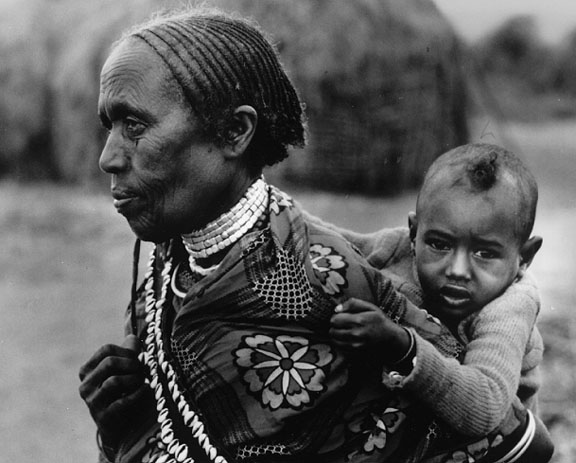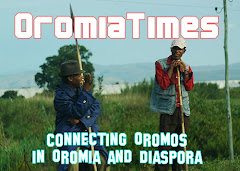McClatchy Newspapers
DADAAB, Kenya - The baby boy was still growing in his mother's womb when government troops stormed their village in southern Sudan and opened fire. She was shot in the back of her left shoulder as she tried to flee, and the trauma sent her into labor.
The bullet that ushered the boy into the world came from a rifle that the family mistakenly called an AK-42. So the Deng family named him "42," a defiant joke on his would-be killers and a lifetime reminder of the two-decade civil war that's decimated his people.
Officially, the fighting in southern Sudan has been over for nearly two years. But 42, who's now 15, still lives here, hundreds of miles from his homeland, in a closet-sized hut cobbled together with sticks.
He may never go home again.
"After 20 years," said the tall, earnest boy, "I don't believe a war can just stop."
Worldwide, the U.N. High Commissioner for Refugees estimates that some 6.2 million people - roughly the population of Washington state or Indiana - are living in "protracted refugee situations," which it defines as five years or more in a refugee camp. They're living in limbo, unable or afraid to go home, struggling to put down new roots in foreign soil and subsisting on the kindness of strangers.
What may be one of the largest collections of refugees anywhere in the world is in northern Kenya, where 42 and more than 160,000 other people live in three refugee camps clustered around the desert town of Dadaab.
Now heavy rains and flooding are wreaking havoc in the camps, says the aid agency CARE, which has run the Dadaab camps since they opened 15 years ago.
"Food storage facilities have been flooded, latrines have collapsed, and a significant number of shelters, including one wing of the hospital in Ifo camp, have crumbled," said Mohammed Qazilbash, CARE's senior program manager for refugee assistance in Kenya.
The vast majority of the people in the camps around Dadaab are from Somalia, but there are also Rwandans, Congolese, Ethiopians, Ugandans, Eritreans and Sudanese - the human debris of the civil wars, genocide and ethnic cleansing that have plagued East and Central Africa for two decades.
Except for Somalia, where growing numbers of people are fleeing a possible war between Islamist militias and an interim government, the conflicts that sent people fleeing to Dadaab have largely subsided. Southern Sudan is trying to rebuild after a 2005 peace agreement; Congo just held its first democratic elections in more than 40 years; post-genocide Rwanda boasts one of the fastest growing economies in Africa.
But many refugees aren't going home anytime soon, and life for most has a stifling air of permanence.
Members of long-persecuted minority groups don't feel welcome in their homelands. Other refugees are too poor or too frail to make the long, hot trek. Still others, having lost their families and villages to war, say they have nothing to return to.
"For the vast majority of the refugees, safety and security are the No. 1 reasons not to return home," Qazilbash said.
Under Kenyan law, refugees can't hold jobs or live outside of camps except in rare circumstances. So the camps are a parallel society, with their own economies, schools and health systems. The refugees, once cattle herders or farmers, are now entirely dependent on U.N. food rations.
Four hundred children are born each month in the Dadaab camps, Qazilbash said, a generation of children who will grow up as the wards of international aid agencies. Aid workers think the population could rise to 196,000 next year, due mostly to the ongoing insecurity in Somalia.
Some of the tired and poor still hope to be resettled in a rich Western country, a promised land such as America. Less than 1 percent of the world's refugees were that lucky last year.
"The camps are going to continue to be here, and they are going to continue to grow," Qazilbash said. "The options left for the refugees are still going to be extremely minimal."
Kenyan authorities acknowledge that they have little control over their refugee population. Legislation that would give the Kenyan government responsibility for registering refugees - currently handled by the United Nations - has been held up in parliament for years.
Meanwhile, fears that Somalia's clan-based tensions could bleed into the camps - as well as resentment among poor Kenyans that refugees are being cared for by aid groups - are growing.
"People are reasonably asking, `How long is this going to go on?'" said Eva Maina-Ayiera of the nonprofit Refugee Consortium of Kenya in Nairobi. "No country wants to host refugees forever."
While not seen as breeding grounds for extremism like the camps housing hundreds of thousands of Palestinians in the Middle East - the world's oldest and largest protracted refugee situation - Dadaab's sprawling camps reportedly serve as conduits for weapons for the country's large ethnic Somali community.
In October, the main border checkpoint for refugees from Somalia was closed for several days after authorities learned that perhaps thousands of people had registered as refugees multiple times, to obtain extra humanitarian aid.
"There are lots of security concerns," Maina-Ayiera said. "When there is a crisis the refugees just come in. The government is a step or two behind."
There are tensions outside the camps between refugees and their Kenyan neighbors. As the camps have swelled in size, and drought and desertification have taken their toll on the desert landscape, competition has increased for scarce resources such as water and firewood.
Kenyans complain that refugees dig up the soil to make bricks, leaving troughs that turn to vast puddles in the rain and breed diseases such as malaria and cholera.
"Imagine 150,000 people coming to settle in your midst and you have no say in the matter," said Dennis Ogola, the Kenyan government's administrative officer in Dadaab. "The environment is very precarious at best."
Still, not all is bleak in Dadaab. The camps pulse with the rhythms of a typical African market town; there are neighborhoods and businesses, schools and hospitals operated by aid agencies, and restaurants and bars owned by refugees.
In the Hagadera camp, Somali refugees run one of the busiest marketplaces in eastern Kenya, selling everything from sewing machines to cell phones brought across the porous border with Somalia some 60 miles away. One aid worker ordered a color television from a camp shopkeeper and it arrived a week later - "faster than in Nairobi," Kenya's capital, he said.
In Baye Belete Asefaw's restaurant in the Ifo camp, potted flowers line the entryway and dark, pungent smoke from a charcoal grill fills the air. On a lazy Saturday afternoon, Kenyan police officers assigned to patrol the camps sip sodas and argue about soccer; one reclines on a cushion with a young, vacant-eyed Somali woman, a prostitute who looks no older than 20.
Asefaw, a bookish 65-year-old, fled his native Ethiopia in 1992 after a government crackdown on dissidents in the Oromo region landed him in prison for nine months. He left his wife and seven children behind and he hasn't seen them since; he learned that his wife had died two years ago in a letter from his daughter.
A former civil servant with a background in accounting, Asefaw could find no work in the camps. So he borrowed some money from friends, hired a cook and turned his small patch of sandy earth into a restaurant. Now it's a popular hangout for aid workers - one of the few places in the scorching camps where one can buy a cool soda.
"When I had my family, I wouldn't even have to lift a pitcher to pour water. But I am doing this to survive," Asefaw said. The ongoing campaign against the Oromo people by Prime Minister Meles Zenawi, who's of a rival ethnicity, means it's still not safe for him to return to Ethiopia, he said.
Like many of Dadaab's refugees, Asefaw has applied to the U.N. refugee agency for resettlement in a Western country. But the odds of that are only slightly better than they are of winning the lottery, and so far he hasn't even been granted a resettlement interview.
"I am waiting to die here," he said.
Source: Realcites.com



No comments:
Post a Comment